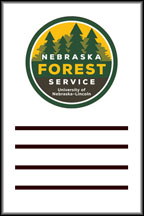Nebraska Forest Service

Nebraska Forest Service: Publications
Document Type
Article
Date of this Version
2008
Abstract
Increased utilization of wood waste can help decrease our Nation’s dependence on foreign energy purchases, generate energy cost-savings, enhance the efficiencies of forest and range management efforts, reduce the amount of wood waste disposed of in landfills and stimulate local economic development. In 2006 a Rand Corporation analysis found that 25% of the Nation’s energy could be competitively produced from ethanol, wind power and other forms of renewable energy such as woody biomass. A national alliance, known as the Energy Future Coalition, has subsequently advanced the “25 x 25 Initiative”. (www.25x25.org) The Coalition’s vision, now endorsed by the National Association of State Foresters, states: “By 2025, America’s farms, forests and ranches will provide 25 percent of the total energy consumed in the United States, while continuing to produce safe, abundant and affordable food, feed and fiber.”
In order to help produce renewable energy and create new markets for low value waste wood resources, the Nebraska Forest Service (NFS) is investigating the potential to increase the State’s utilization of wood-waste biomass to produce bio-energy and bio-fuels. NFS received a USDA Forest Service “Wood-to-Energy Jumpstart” grant to conduct a wood waste supply assessment for the entire state and to provide a geo-spatial analysis that identified potentially optimal wood-to-energy market locations.


Comments
Issued by Rich Lane, Camas Creek Enterprises, Inc., Missoula Montana, December 2008